Help Foster a Love for Plants with these Crafts for Kids
In a world where screens dominate our children's attention, it's crucial to introduce them to the wonders of nature. Engaging in plant-themed crafts can be a fantastic way to ignite a passion for gardening and the environment. These activities not only promote creativity but also help kids develop a deeper understanding of the natural world around them. Imagine the joy on their faces as they dig their hands into the soil, create vibrant plant pots, or watch their seed bombs explode into life! By incorporating fun, hands-on projects, we can foster a love for plants that lasts a lifetime.
Crafting with plants offers a myriad of benefits. It encourages children to explore their artistic side while learning about the growth process and the importance of taking care of our planet. Through these activities, kids can connect with nature in a meaningful way, developing skills that will serve them well in the future. Not only will they learn about the different types of plants and their needs, but they will also gain a sense of responsibility as they nurture their creations. So, let’s dive into some exciting plant-themed crafts that will inspire your little ones!
One of the first steps in nurturing a love for plants is to create personalized plant pots. This can be done using recycled materials such as old cans, plastic bottles, or even cardboard boxes. Not only does this allow kids to express their creativity, but it also teaches them about the importance of recycling and reusing materials. Imagine a colorful pot adorned with stickers, paint, or even natural elements like twigs and leaves!
Encouraging kids to decorate their pots can be a delightful experience. They can paint them in bright colors, draw their favorite animals, or even write their names on them. This personal touch makes the pots feel special and unique, fostering a sense of ownership and pride in their plants. As they fill their pots with soil and plant seeds or seedlings, children learn about the nurturing process, making it an enriching experience.
Now, let’s talk about the fun of making seed bombs! This playful activity is not only enjoyable but also educational. Seed bombs are small balls made from clay, soil, and seeds, which can be tossed into the garden or a neglected area to sprout new life. Kids will love the hands-on aspect of this project, and they’ll be thrilled to see their creations bloom into beautiful plants.
The first step in making seed bombs is gathering materials. This can turn into an exciting scavenger hunt! Kids can collect natural items like twigs, leaves, and stones, learning about the different plants and their environments along the way. It’s a fantastic opportunity for them to explore and appreciate the beauty of nature.
When selecting seeds for the seed bombs, it’s essential to choose the right ones. Kids can learn about native plants and flowers that will thrive in their local environment. This not only fosters a deeper connection to local ecology but also teaches them about the importance of biodiversity. Imagine the thrill of planting seeds that will attract butterflies and bees, contributing to the ecosystem!
Mixing clay, soil, and seeds is a sensory-rich experience. Kids can feel the textures of the materials as they combine them, helping them understand the components of plant growth. This hands-on crafting also develops their fine motor skills, making it an engaging and educational process. Watching the transformation from individual ingredients to a compact seed bomb is truly magical!
Once the seed bombs are ready, it’s time to teach kids how to plant them effectively. This involves selecting the right spot, preparing the soil, and knowing how much water to give. As they nurture their creations, they’ll witness the fruits of their labor, watching as their seed bombs burst into life. It’s an exciting journey from crafting to gardening, and it helps instill a sense of accomplishment and responsibility.
Beyond planting, there are numerous art projects that incorporate natural elements. These activities encourage children to observe and appreciate the beauty of plants while expressing their creativity. For instance, creating leaf prints is a simple yet effective way for kids to explore the textures and shapes found in nature. They can use paint or ink to capture the intricate details of leaves, turning them into unique pieces of art.
Leaf printing not only promotes artistic expression but also teaches kids about the diversity of plant life. Each leaf has its own unique pattern, and by creating prints, children can learn to identify different species while having fun. This project can be a wonderful way to connect art and nature, allowing kids to take home a piece of the outdoors.
Another delightful activity is flower pressing. This teaches children about the preservation of plants, allowing them to create beautiful keepsakes. As they press flowers between the pages of a heavy book, they learn about the importance of biodiversity and the role of flowers in ecosystems. Once dried, these flowers can be used in various crafts, from bookmarks to framed art, serving as a reminder of the beauty of nature.
Engaging the whole family in gardening activities fosters teamwork and responsibility. It’s a wonderful way for children to understand the importance of caring for plants while creating lasting memories together in the garden. Imagine a sunny afternoon spent planting seeds, watering the garden, and sharing stories—all while enjoying each other's company!
Selecting the right space for a family garden can be an exciting adventure. Kids can learn about sunlight, soil, and space requirements for different plants, making them active participants in the gardening process. Whether it’s a small balcony or a backyard, involving children in the decision-making process helps them feel valued and invested in the project.
Establishing a plant care routine is crucial. It teaches children responsibility and the importance of nurturing living things. By watering, weeding, and observing their plants regularly, kids develop a consistent approach to caring for their plants over time. This routine not only reinforces their connection to nature but also instills valuable life skills that will benefit them in the future.
Q: What age group is suitable for these plant-themed crafts?
A: These crafts are suitable for children of all ages, with some activities being adaptable for younger kids. Always supervise younger children during crafting and gardening activities.
Q: Can these crafts be done indoors?
A: Absolutely! Many of these crafts, like creating plant pots and leaf prints, can be done indoors as long as you have a suitable workspace.
Q: How can I encourage my child to take care of their plants?
A: Involve them in the entire process, from planting to caring for the plants. Establish a routine and make it fun by tracking growth and celebrating milestones together.
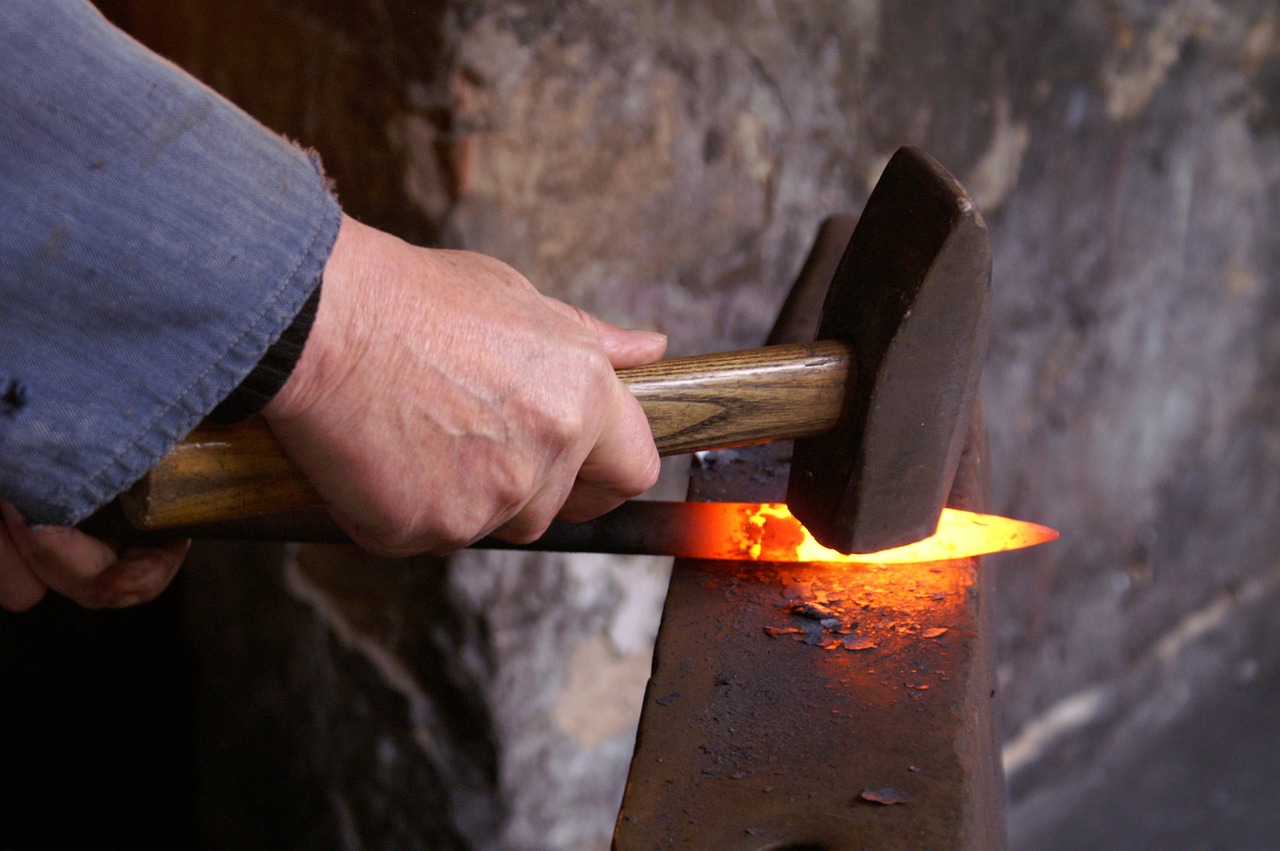
Creating Plant Pots
Have you ever thought about how much fun it would be for kids to create their own personalized plant pots? Not only does this activity spark their creativity, but it also teaches them valuable lessons about recycling and nurturing plants. Imagine a world where each child has a unique pot that reflects their personality, filled with vibrant plants they’ve cared for themselves. It’s a win-win situation! By using recycled materials, such as old containers, bottles, or even tin cans, kids can transform everyday items into beautiful homes for their plants. This not only gives them a sense of ownership but also instills a sense of responsibility towards the environment.
To kick off the crafting adventure, gather some basic materials. You’ll need:
- Recycled containers (plastic pots, yogurt cups, or tin cans)
- Acrylic paints or markers for decoration
- Paintbrushes and sponges
- Soil and plants or seeds for planting
Once you have your materials ready, it’s time to dive into the fun! Start by letting the kids clean and prepare their chosen containers. This could mean washing out old yogurt cups or removing labels from cans. Next, unleash their artistic flair! Encourage them to paint or decorate their pots however they like. They can use vibrant colors, patterns, or even stickers to make their pots truly unique. This activity not only allows them to express themselves but also gives them a deeper connection to the pots they’ve created.
After the pots are decorated and dried, it's time to plant! Fill the pots with soil, leaving enough space for the seeds or small plants. Kids can learn about different types of plants and how to care for them. This can lead to discussions about sunlight, water, and the nutrients plants need to thrive. By nurturing their own plants, children will develop a sense of pride and accomplishment as they watch their creations grow. It’s like watching a little piece of their imagination blossom into reality!
Moreover, creating plant pots can be a great educational opportunity. You can incorporate lessons about the environment, the importance of recycling, and even the science behind plant growth. Kids can learn about the water cycle, photosynthesis, and the different parts of a plant. By making this a fun and interactive experience, you can foster a love for nature that lasts a lifetime.
In conclusion, creating personalized plant pots is not just a fun craft; it's an enriching experience that combines art, education, and environmental awareness. So gather your recycled materials, unleash your creativity, and watch as your children develop a lasting appreciation for plants and gardening!
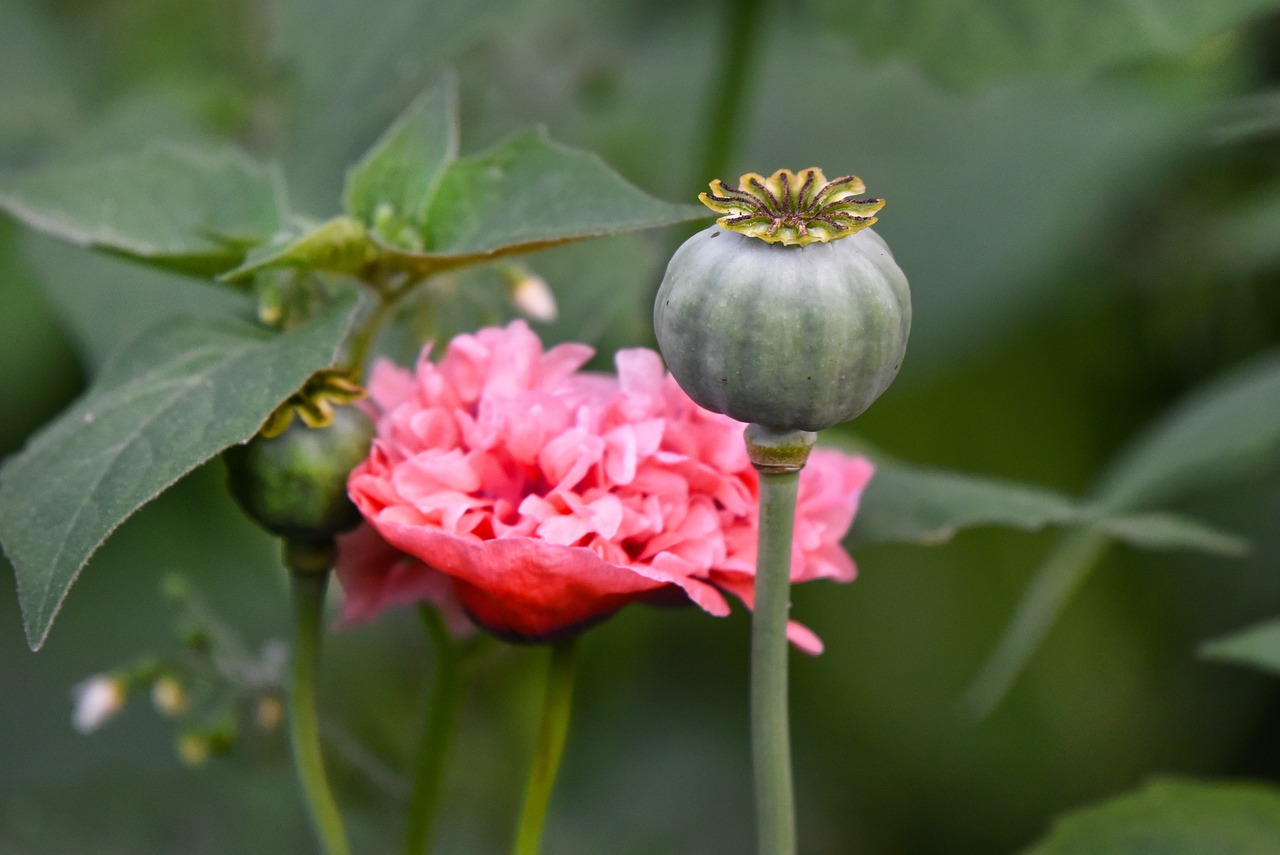
Seed Bombs for Kids
Discovering the joy of gardening can be an exhilarating adventure for kids, and what better way to kickstart this journey than by making seed bombs? These delightful little balls of soil, clay, and seeds not only provide a fun crafting experience but also teach children about the magic of planting and growing. Imagine the excitement on their faces as they toss these colorful creations into the garden or a bare patch of earth, knowing they are contributing to the environment!
Making seed bombs is a hands-on activity that transforms the learning process into a playful experience. Children can engage in a scavenger hunt for natural materials, which allows them to explore their surroundings while learning about different types of plants and their ecosystems. This scavenger hunt can include:
- Collecting clay from the ground
- Gathering soil from a garden bed
- Finding seeds from local plants or purchasing them
Once the materials are gathered, it's time to dive into the fun of crafting. Mixing the ingredients together is not only a sensory-rich experience but also an opportunity for kids to develop their fine motor skills. As they knead the clay, soil, and seeds together, they can learn about the essential components of plant growth. This tactile engagement is crucial; it helps cement their understanding of how plants thrive in the right conditions.
The first step in creating seed bombs is gathering all the necessary materials. This can be turned into an educational experience, as children can learn about the various plants in their environment. By identifying different types of soil, clay, and seeds, kids can gain a deeper appreciation for the diversity of nature. Engaging them in this process not only makes it fun but also instills a sense of responsibility towards the environment.
Next comes the exciting part—choosing the right seeds! This is where kids can learn about native plants that are well-suited for their local environment. By selecting seeds that thrive in their area, children can witness firsthand how their efforts contribute to local biodiversity. For instance, they might choose wildflowers, herbs, or even vegetables. Each seed carries a story, and understanding this can spark a lifelong interest in gardening and ecology.
Now, let’s get our hands dirty! Mixing the clay, soil, and seeds is where the magic happens. Kids can form small balls, ensuring they blend the ingredients well. This process is not only fun but also educational, as it teaches them about the importance of soil health and seed viability. As they craft, they can discuss why each ingredient matters, turning this simple activity into a rich learning experience.
Once the seed bombs are ready, it’s time to plant them! Teaching kids effective planting techniques will enhance their gardening skills and allow them to see the fruits of their labor. They can learn about soil preparation, sunlight needs, and watering techniques, which are crucial for nurturing their creations into blooming plants. Watching their seed bombs sprout and grow will undoubtedly instill a sense of pride and accomplishment.
In conclusion, making seed bombs is more than just a craft; it’s a gateway for children to connect with nature, learn about environmental stewardship, and foster a love for gardening. So, gather your materials, roll up your sleeves, and let the planting adventures begin!
| Question | Answer |
|---|---|
| What are seed bombs? | Seed bombs are small balls made of soil, clay, and seeds that can be planted to grow flowers or plants. |
| Can we use any seeds for seed bombs? | It's best to use native seeds that are suitable for your local environment to ensure they thrive. |
| How do we plant the seed bombs? | Simply toss them onto bare soil or into your garden, and wait for rain to help them break down and grow! |

Gathering Materials
Gathering materials for making seed bombs can be an exciting adventure for kids, almost like embarking on a treasure hunt! Imagine the thrill of exploring your backyard or a nearby park, collecting various natural elements that will help create something magical. This process not only sparks creativity but also teaches children about the diverse plants and materials that exist in their environment. As they scavenge for items, they can learn to appreciate the beauty of nature, which is the first step in fostering a lifelong love for plants.
When embarking on this scavenger hunt, it's essential to look for a variety of materials that will contribute to the seed bomb's success. Here are some great items to gather:
- Clay: This acts as a binding agent for the seed bomb. Natural clay can often be found in gardens or purchased from craft stores.
- Soil: Rich, organic soil is crucial for providing nutrients to the seeds. A small amount from your garden or a local park can work wonders.
- Seeds: Choosing the right seeds is vital, and kids can learn about native plants that thrive in their local area.
- Water: A little moisture is needed to mix the ingredients together, so having a water source nearby is helpful.
Encouraging children to identify and collect these materials promotes environmental awareness and a sense of responsibility. As they gather items, they can also discuss why each material is important for the growth of plants. For instance, they can learn how clay helps retain moisture and how good soil is filled with the nutrients plants need to flourish. This interaction not only enhances their understanding of the crafting process but also deepens their connection to the ecosystem around them.
So, grab a basket, put on some comfortable shoes, and head out into nature! The excitement of gathering materials is just as important as the crafting itself, igniting curiosity and fostering a love for the great outdoors. By the end of this adventure, your kids won't just have the materials they need; they'll also have a newfound appreciation for the plants that surround them.
Q: What types of seeds are best for seed bombs?
A: It's best to use native wildflower seeds or easy-to-grow vegetables that thrive in your local climate. This helps support local wildlife and promotes biodiversity.
Q: Can we use any type of clay for making seed bombs?
A: Natural clay is preferable, as it is biodegradable and environmentally friendly. Avoid using synthetic clays that may contain harmful substances.
Q: How long does it take for seed bombs to sprout?
A: The sprouting time can vary depending on the type of seeds used and environmental conditions. Generally, you can expect to see sprouts within a few weeks to a couple of months.
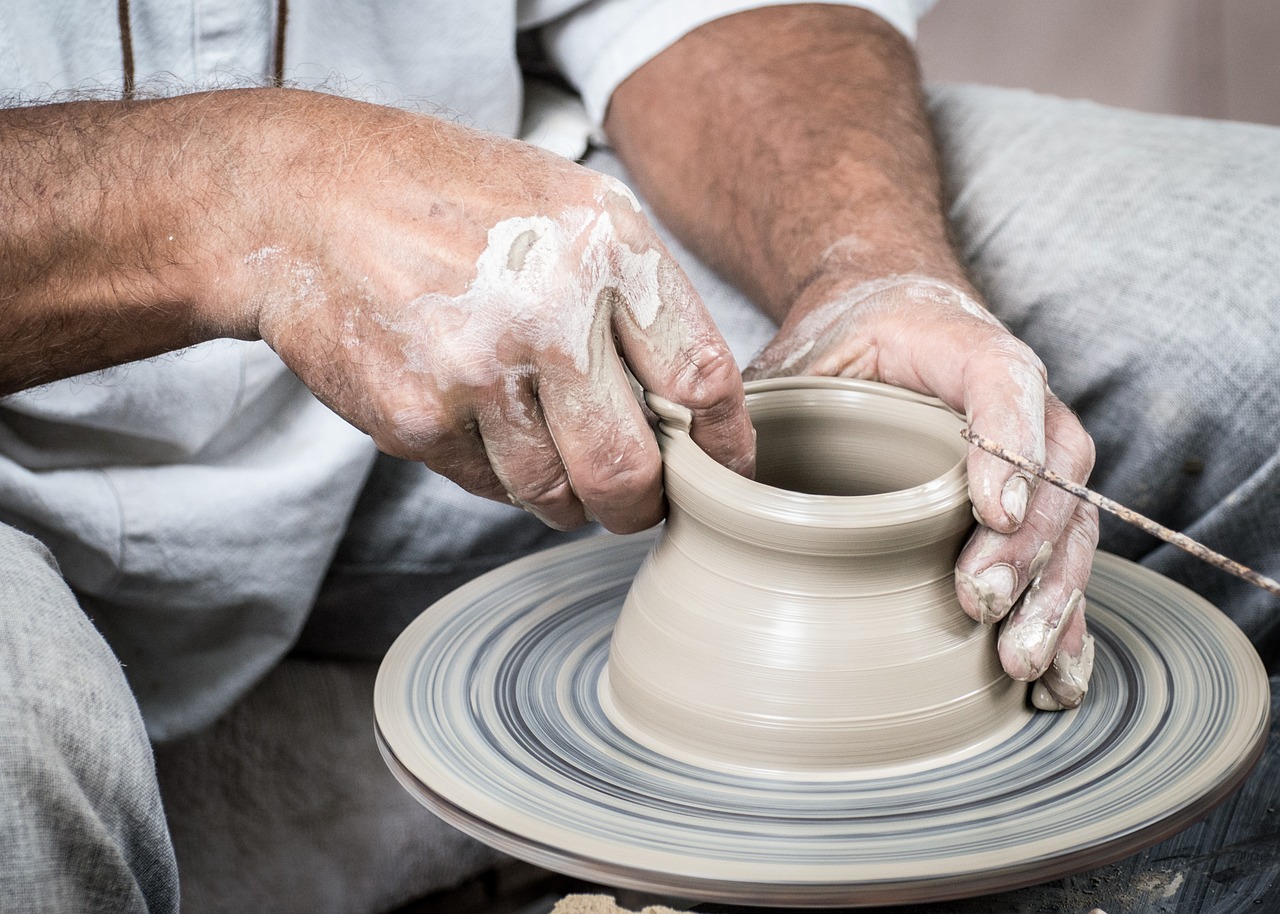
Choosing Seeds
When it comes to making seed bombs, one of the most exciting parts is choosing the right seeds. This decision is not just about picking pretty flowers or fast-growing plants; it’s about understanding the local environment and the role these plants play in it. Children can learn so much about their surroundings by selecting seeds that are native to their area. Native plants are adapted to the local climate, soil, and wildlife, making them more likely to thrive and support local ecosystems.
Encouraging kids to explore different seed options can turn into a fun and educational adventure. For instance, you might want to introduce them to a variety of seeds, such as:
- Wildflowers: These are not only beautiful but also attract beneficial insects like bees and butterflies.
- Herbs: Plants like basil, mint, or cilantro can be both fun to grow and useful in the kitchen.
- Vegetables: Fast-growing veggies like radishes or lettuce can provide instant gratification and teach kids about food sources.
To make the seed selection process even more engaging, consider organizing a little seed swap with friends or neighbors. This way, kids can trade seeds and learn about different plants that they may not have encountered before. It’s a fantastic way to encourage community involvement and share knowledge about gardening.
Moreover, you can set up a mini-research project where kids can look up information about the seeds they choose. They can discover details such as:
| Seed Type | Growth Conditions | Bloom Time |
|---|---|---|
| Sunflower | Full sun, well-drained soil | Summer |
| Marigold | Full sun, moderate water | Summer to fall |
| Basil | Full sun, rich soil | Summer |
This kind of research not only enriches their knowledge but also deepens their connection to the plants they are nurturing. By understanding the specific needs of their chosen seeds, children will be better equipped to care for them, ensuring a successful gardening experience. Plus, when they see the fruits of their labor blooming and thriving, they’ll feel a sense of accomplishment and pride that can last a lifetime.
- What are the best seeds for beginners? Start with easy-to-grow seeds like sunflowers, marigolds, and herbs. They’re forgiving and can thrive in various conditions.
- How do I know if a plant is native to my area? You can check local gardening centers, extension services, or online databases for information about native plants in your region.
- Can I use seeds from fruits and vegetables I buy at the store? Yes, but make sure they are non-hybrid and untreated seeds for the best chance of germination.

Mixing the Ingredients
Mixing the ingredients for seed bombs is not just a simple task; it’s an adventure that engages all the senses! Imagine the feel of the cool, damp soil between your fingers and the crunchy texture of clay as you combine them. This process is a fantastic way for kids to dive into the world of plants and learn about what makes them grow. To start, gather your materials: clay, potting soil, and seeds. Each ingredient plays a vital role in the creation of these little green wonders.
First, take a moment to appreciate the clay. It’s not just a binding agent; it symbolizes the earth itself. As you knead the clay, talk to your kids about how it holds moisture and provides structure to the seed bomb. Then, add the soil, which is rich in nutrients and serves as the lifeblood for the seeds once they start to sprout. Kids can feel the difference between the soft soil and the firm clay, making it a sensory-rich experience.
Next, it’s time to introduce the seeds. Explain to the children that these tiny specks hold the potential for life and growth. They can choose from a variety of seeds, such as wildflowers or herbs, depending on the season and local climate. This is a great opportunity to discuss the importance of native plants and how they contribute to the ecosystem. Once the seeds are selected, mix them into the soil and clay blend, ensuring that they are evenly distributed.
As you mix everything together, encourage your kids to ask questions about the process. Why do we need clay? How does soil help the seeds? This dialogue not only enhances their understanding but also fosters a deeper connection with nature. The tactile experience of mixing the ingredients helps develop their fine motor skills, as they pinch, squeeze, and roll the mixture into small balls.
Once everything is well combined, the final step is to shape the mixture into balls, about the size of a marble. This is where the magic happens! Each seed bomb is a tiny package of potential, ready to be tossed into the world. Remind the kids that these little creations will need water and sunlight to thrive, just like any other plant. With a sense of accomplishment, they can now look forward to planting their seed bombs in the garden or a nearby green space.

Planting Techniques
Teaching kids the right is crucial for their understanding of gardening and the growth process. When it comes to planting seed bombs, it's not just about throwing them into the ground and hoping for the best; there's an art and science to it! Start by explaining the importance of choosing the right location. Kids can learn that different plants have different needs, and understanding these needs can make a big difference in the success of their gardening efforts.
Once the location is chosen, it's time to get hands-on! Kids can dig small holes or create shallow trenches where the seed bombs will be placed. This is a great opportunity to teach them about soil health—what makes soil rich and nutritious for plants to thrive. You might say, "Think of soil as a cozy blanket for your seeds. The better the blanket, the warmer and safer the seeds feel!"
After preparing the planting site, let the kids gently place their seed bombs into the holes. Encourage them to cover the seed bombs lightly with soil, explaining that this helps protect them from birds and other animals who might be tempted to snack on them. This step not only teaches them about protecting their plants but also about the delicate balance of nature.
Watering is another vital aspect of planting. Kids should learn that after planting, it's important to give their seed bombs a good drink of water. You could turn this into a fun game by letting them use watering cans or even spray bottles to water their creations. Explain that just like humans, plants need hydration to grow strong and healthy. Remind them to check the soil regularly—if it feels dry, it’s time to water again!
Finally, instill in them the excitement of waiting and watching. Planting is not just a one-and-done task; it’s a journey! Encourage the kids to observe their seed bombs over time, noting any changes they see. This could be a fun family project where everyone keeps a journal of their observations. They can draw pictures, write down dates when they notice sprouts, or even take photos to document the growth process. This way, they’ll learn patience and the rewards of nurturing plants.
- What types of seeds are best for seed bombs?
Native wildflowers and easy-to-grow plants are ideal as they adapt well to local environments and support local wildlife. - How long does it take for seed bombs to sprout?
It can take anywhere from a few days to several weeks, depending on the type of seeds used and environmental conditions. - Can we use any type of soil for planting?
Using quality potting soil or garden soil that is rich in nutrients is recommended for the best results. - What should we do if it rains after planting?
Rain can be beneficial, but if it’s too heavy, make sure the seed bombs are not washed away. Check the planting area to ensure they stay in place.

Nature-Inspired Art Projects
Engaging children in is an incredible way to combine creativity with an appreciation for the environment. These activities not only spark imagination but also help kids observe the beauty and diversity of the natural world around them. Imagine your little ones wandering through the garden, collecting leaves, flowers, and other natural materials, all while learning about the ecosystems that support them. It's like a treasure hunt that leads to artistic expression!
One of the simplest yet most rewarding art projects is creating leaf prints. This activity allows children to explore the unique textures and shapes of different leaves. All you need are some leaves, paint, and paper. Kids can paint one side of a leaf and press it onto the paper, revealing intricate patterns that showcase nature's artistry. This hands-on experience not only promotes artistic expression but also teaches children about the diversity of plant life. They can experiment with various colors and sizes, turning a simple leaf into a stunning piece of art.
Another fantastic project is flower pressing. This technique teaches children about the preservation of plants while allowing them to create beautiful keepsakes. To get started, kids can gather various flowers from the garden or a local park. By placing the flowers between sheets of paper and using a heavy book to press them, they can create a lovely collection of dried flowers. Once dried, these pressed flowers can be used in various crafts, such as making bookmarks or decorating cards. This not only reinforces the importance of biodiversity but also shows how flowers play a crucial role in our ecosystems.
For those looking to incorporate a bit more structure into their projects, consider hosting a nature art exhibition. Invite friends and family to view the children's creations, fostering a sense of pride and accomplishment. This event can also serve as a platform for discussing the importance of plants and conservation, making art a vehicle for environmental education. Kids can explain their artwork, share what they learned about the plants they used, and even suggest ways to protect the environment.
To wrap up, nature-inspired art projects are not just fun; they are a gateway for children to connect with the world around them. By engaging in activities like leaf printing and flower pressing, kids not only enhance their artistic skills but also deepen their understanding of nature. These projects can transform a simple afternoon into a memorable learning experience that nurtures a lifelong love for plants and the environment.
- What materials do I need for leaf prints? You will need leaves, paint, and paper. Optional items include brushes and additional decorative materials.
- How long does it take for pressed flowers to dry? Typically, it takes about 1-2 weeks for flowers to dry completely, depending on the type of flower and humidity.
- Can I use any type of flower for pressing? Yes, but some flowers work better than others. Flat, thin flowers like daisies and pansies tend to press well.
- How can I display my children's art projects? Consider framing them, creating a scrapbook, or even using them as decorations for special occasions!

Leaf Prints
Creating is a simple yet captivating way for kids to explore the textures and shapes found in nature. This craft not only promotes artistic expression but also enhances their understanding of the diversity of plant life. Imagine the joy of pressing a leaf onto paper and revealing its intricate veins and patterns! It's like uncovering a hidden treasure that nature has to offer.
To get started, gather some materials. You'll need:
- Fresh leaves of various shapes and sizes
- Non-toxic paint or ink
- Paper or canvas
- A brayer or paintbrush
- Optional: A rolling pin for extra pressure
First, head outside with the kids to collect leaves. This scavenger hunt can be a delightful learning experience, as children discover different types of leaves and learn to identify the plants they come from. Encourage them to choose leaves with interesting shapes, textures, and colors. Once you have a variety, it’s time to get creative!
Next, spread the paint or ink evenly on a flat surface. Kids can use a brayer or a paintbrush to apply a thin layer of paint on one side of the leaf. The key here is to ensure that the leaf is coated well but not dripping. Then, place the painted side of the leaf down onto the paper or canvas and press firmly. If you want to ensure a good print, use a rolling pin to apply even pressure. This step is crucial as it helps transfer the paint from the leaf to the paper.
After pressing, carefully lift the leaf off to reveal a stunning print. Each print will be unique, showcasing the intricate details of the leaf. Kids can experiment with different colors and layering techniques, creating a whole garden of beautiful leaf prints. This activity not only allows children to express their creativity but also teaches them about the importance of leaves in the ecosystem, such as their role in photosynthesis and providing oxygen.
Once the prints are dry, consider displaying them as art pieces around your home or even making a nature-themed scrapbook. This way, the kids can look back at their creative endeavors and appreciate the beauty of nature long after the leaves have fallen!
Q: What types of leaves work best for leaf printing?
A: Leaves with prominent veins and textures, such as maple, oak, or ferns, work wonderfully for leaf printing. Experimenting with various types can yield exciting results!
Q: Can we use other materials instead of paint?
A: Absolutely! You can use natural dyes, food coloring, or even ink from markers. Just ensure that whatever you use is safe and non-toxic.
Q: How can we preserve the leaf prints after making them?
A: Once the prints are dry, you can frame them, laminate them, or store them in a scrapbook to keep the memories alive!
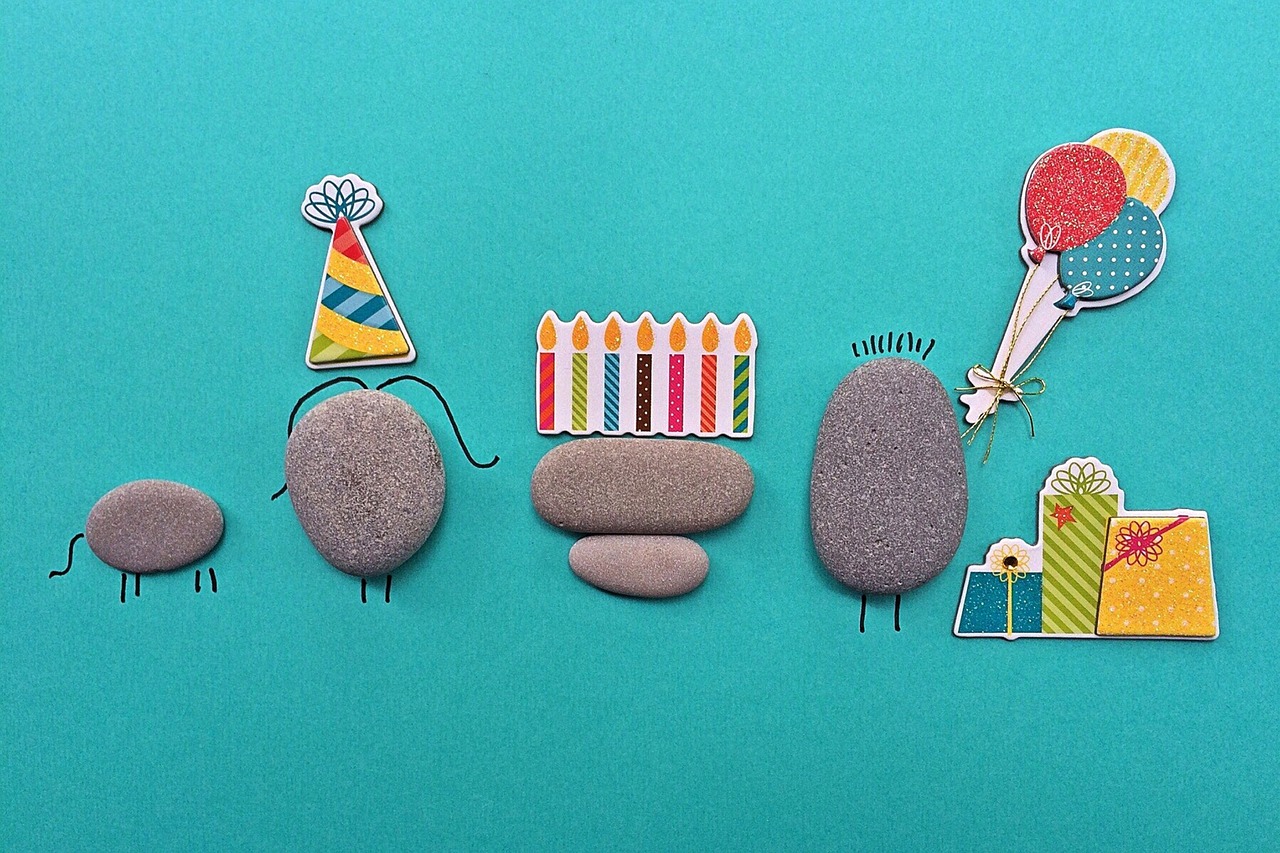
Flower Pressing
Flower pressing is not just a craft; it's a delightful journey into the world of nature that allows kids to explore the beauty and diversity of plants. Imagine taking a walk in a garden or a park, spotting vibrant flowers in every color of the rainbow, and then capturing their beauty forever. This simple yet engaging activity teaches children about the importance of preservation and the role flowers play in our ecosystems. It's like creating a time capsule of nature right in your home!
To start, gather a variety of flowers, leaves, and even ferns. Kids can embark on a mini scavenger hunt to find the perfect specimens, which not only makes the process fun but also educates them about different plant species. Once they have collected their treasures, the real magic begins. Pressing flowers is straightforward: all you need are some heavy books or a flower press, parchment paper, and a little bit of patience. By placing the flowers between sheets of parchment and then stacking heavy books on top, children can watch as their flowers transform over time, flattening out and retaining their color.
As the flowers dry, kids can learn about the science behind the process. They can observe how moisture is removed, and the flowers retain their shape and color. This activity not only enhances their understanding of plant biology but also fosters a sense of responsibility as they care for their pressed flowers. After a week or so, when the flowers are fully dried, children can use them to create stunning art projects, such as greeting cards, bookmarks, or framed art pieces. The possibilities are endless!
Moreover, flower pressing can spark discussions about biodiversity and conservation. You might ask, “Why are some flowers more common than others?” or “What role do flowers play in attracting pollinators?” These questions can lead to deeper conversations about the environment, encouraging kids to appreciate and care for the plants around them.
In conclusion, flower pressing is a wonderful way to combine creativity with education. It allows children to express themselves artistically while instilling a deep appreciation for nature. Plus, every time they look at their pressed flowers, they’ll be reminded of the beautiful moments spent exploring the outdoors. So, gather those blooms and let the pressing begin!
- What types of flowers are best for pressing?
Flat flowers with a good amount of color, such as daisies, pansies, and violets, work best. Avoid thick or fleshy flowers as they may not press well.
- How long does it take for flowers to dry?
Typically, it takes about 1 to 2 weeks for flowers to fully dry and be ready for use.
- Can I press leaves as well?
Absolutely! Leaves can add beautiful textures and colors to your pressed projects.
- What can I do with pressed flowers?
You can create bookmarks, cards, framed art, or even use them in scrapbooking projects.

Gardening as a Family Activity
Engaging the whole family in gardening activities is not just about planting seeds and watering plants; it's about creating a bond that flourishes alongside your garden. Imagine the joy of watching your children’s faces light up as they dig their hands into the soil, feeling the cool earth beneath their fingers. It’s a sensory experience that connects them to the natural world, teaching them the importance of teamwork and responsibility. Gardening together can transform an ordinary backyard into a vibrant space of learning and laughter.
When you involve your kids in gardening, you're not just teaching them how to grow plants; you're also instilling a sense of pride and accomplishment. Each time they see their plants thrive, it reinforces their efforts and encourages them to take ownership of their little green patches. Plus, it’s a fantastic way to sneak in some education! Kids can learn about different plant species, the importance of pollinators, and the ecosystem that supports life.
To make the gardening experience even more enriching, consider the following aspects:
- Choosing a Garden Space: Finding the perfect spot for your family garden can be an exciting adventure. It’s like a treasure hunt! Kids can help assess the sunlight, soil quality, and space requirements for various plants. This hands-on exploration teaches them about the natural environment and how different conditions affect plant growth.
- Plant Care Routines: Establishing a plant care routine is crucial. Kids can learn to water, weed, and nurture their plants regularly. This not only teaches them responsibility but also emphasizes the importance of consistency in caring for living things. You might even consider creating a simple chart to track watering schedules and plant growth, adding an element of fun.
As you work together, you’ll find that gardening becomes a canvas for creativity. Kids can decorate plant markers, design garden layouts, and even plan seasonal themes. This allows them to express their individuality while contributing to a shared family project. Plus, the conversations that arise during these activities can lead to deeper connections and memories that last a lifetime. It’s not just about the plants; it’s about the experiences you cultivate together.
In conclusion, gardening as a family activity is a wonderful way to foster a love for nature while teaching valuable life skills. Whether you’re planting vegetables, flowers, or herbs, each moment spent in the garden is an opportunity for learning, bonding, and growing together. So, grab your gardening tools, roll up your sleeves, and let the adventure begin!
| Question | Answer |
|---|---|
| What age is appropriate for kids to start gardening? | Kids as young as 3 can start with simple tasks like digging and watering. As they grow, they can take on more responsibilities. |
| What plants are best for kids to grow? | Easy-to-grow plants include sunflowers, beans, and herbs like basil and mint. They provide quick results and are fun to care for. |
| How can I keep kids engaged in gardening? | Involve them in every step, from planning to planting. Use creative activities like decorating pots or making garden signs to keep their interest alive. |

Choosing a Garden Space
Choosing the right space for a family garden can be an exciting adventure that sparks curiosity and enthusiasm in children. Imagine this: you step outside, and the world is your canvas! But before you start planting, it’s crucial to consider a few important factors that can make or break your gardening experience. First off, think about the amount of sunlight your chosen area receives. Most plants thrive in full sun, which means they need at least six hours of direct sunlight each day. So, scout out spots in your yard that bask in the sun's warm embrace, and watch your little green friends flourish.
Next, let’s talk about soil quality. Healthy soil is the heart of any garden. It’s like the foundation of a house; without a solid base, everything else can crumble. Encourage your kids to dig a little and see what lies beneath the surface. Is it sandy, clayey, or loamy? Each type has its own advantages and disadvantages, and understanding these can be a fun science lesson! You can even create a simple table to compare different soil types and their characteristics:
| Soil Type | Characteristics | Best For |
|---|---|---|
| Sandy | Drains quickly, warms up fast | Root vegetables, herbs |
| Clay | Retains moisture, nutrient-rich | Heavy feeders like tomatoes |
| Loamy | Balanced mix of sand, silt, and clay | Most plants thrive here |
Another critical aspect to consider is the space requirements for different plants. Some plants, like sunflowers, need plenty of room to grow tall and proud, while others, like herbs, can thrive in smaller pots or containers. This is a perfect opportunity for kids to learn about plant spacing and how it affects growth. You might even want to create a small map of your garden layout, marking where each plant will go. This not only makes it fun but also teaches them about planning and organization!
Finally, don’t forget to take into account accessibility. Your garden should be a place where kids can easily reach and care for their plants. Consider raised beds or container gardening if space is limited or if you want to elevate the plants to a more kid-friendly height. This approach not only makes gardening more enjoyable for little hands but also minimizes back strain for adults. By engaging your children in these decisions, you’re not just teaching them about gardening; you’re also instilling a sense of ownership and responsibility.
In summary, the process of choosing a garden space is not just about picking a spot; it's about creating a nurturing environment where children can learn, grow, and connect with nature. So, roll up your sleeves, grab those garden tools, and let the adventure begin!
- What is the best time to start a family garden? The best time to start a garden depends on your local climate, but typically, spring is ideal for most plants.
- How can I make gardening fun for my kids? Incorporate games, like scavenger hunts for gardening tools or plant identification, to keep their interest alive.
- What are some easy plants for kids to grow? Consider starting with fast-growing seeds like radishes, sunflowers, or beans, which provide quick results and excitement.
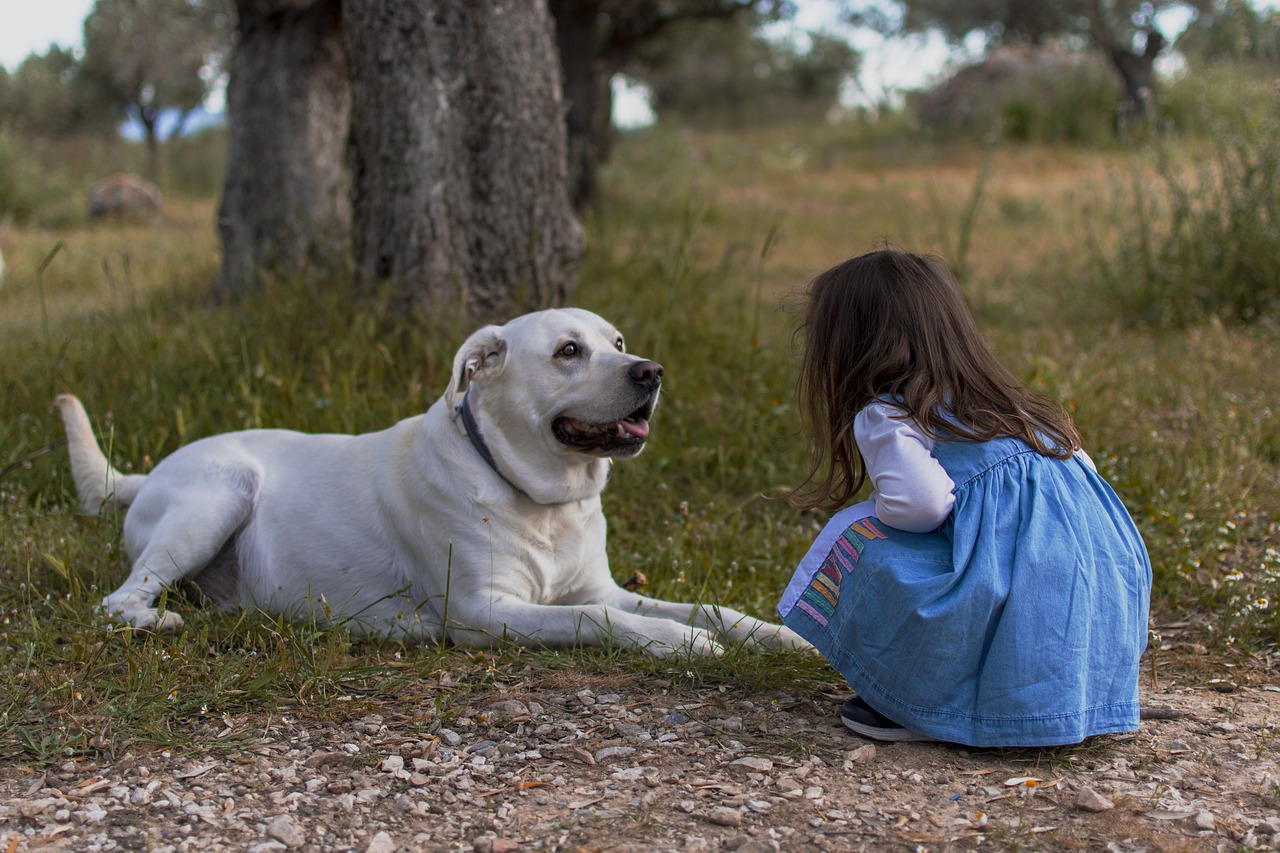
Plant Care Routines
Establishing a plant care routine is a fantastic way to teach children about responsibility and the nurturing of living things. Imagine your child as a little caretaker, tending to their own green companions, learning the ins and outs of what it takes to help them thrive. Just like how we need food, water, and love to grow, plants have their own set of needs, and understanding these can be a fun adventure for kids!
To start, it's essential to create a simple schedule that outlines the daily, weekly, and monthly tasks involved in caring for plants. This not only helps children remember what needs to be done but also instills a sense of accomplishment when they see their plants flourish. Here’s a basic breakdown:
| Frequency | Task | Description |
|---|---|---|
| Daily | Watering | Check if the soil is dry and give the plants a drink of water if needed. |
| Weekly | Checking for Pests | Look for any unwanted guests on the leaves and learn how to remove them. |
| Monthly | Fertilizing | Feed the plants with appropriate fertilizers to ensure they get the nutrients they need. |
By following this routine, children will not only learn about the specific needs of their plants but will also develop a sense of ownership and pride in their gardening efforts. They’ll understand that plants need consistent care and that their actions directly impact the health and growth of these living beings. It’s like being a superhero for plants—every little action counts!
Moreover, integrating fun elements into the routine can keep the excitement alive. For instance, you can turn watering into a game or have a "plant health check" day where kids can dress up as plant doctors, complete with a little kit to inspect and care for their leafy friends. This playful approach not only makes the task enjoyable but also reinforces the importance of regular care.
In addition to these routines, discussing the importance of seasonal changes can deepen their understanding. For example, kids can learn how different seasons affect plant growth and what specific care might be needed during each season. This could include:
- Understanding how to protect plants during winter.
- Learning about pruning in spring.
- Recognizing when to harvest fruits or vegetables in summer.
Ultimately, the goal is to foster a love for plants that lasts a lifetime. By establishing a plant care routine, children not only gain knowledge but also create lasting memories and a connection to nature that can influence their lives in countless positive ways. So, let’s get those little hands dirty and watch them grow alongside their green buddies!
- What type of plants are best for kids to care for?
Start with hardy plants like succulents, spider plants, or herbs, as they are forgiving and easy to maintain. - How can I make plant care more engaging for my child?
Incorporate games, colorful charts, or even plant-themed stories to make the experience more enjoyable. - How often should I change the plant care routine?
Adjust the routine based on the plant’s growth, seasonal changes, and your child’s growing skills and interests.
Frequently Asked Questions
- What materials do I need to create plant pots with my kids?
To make personalized plant pots, you can use recycled materials like plastic bottles, tin cans, or old containers. Just make sure to have some paint, markers, or other decorative items on hand so the kids can express their creativity!
- How do seed bombs help teach kids about gardening?
Seed bombs are a fun and interactive way for kids to learn about planting seeds and the growth process. By making and using seed bombs, children get hands-on experience with gardening, which helps them understand how plants grow and the importance of nurturing them.
- What types of seeds should we use for our seed bombs?
It's best to choose native seeds that are suited for your local environment. This not only helps the plants thrive but also teaches kids about local ecology and the importance of biodiversity.
- What are some fun nature-inspired art projects for kids?
Kids can enjoy projects like leaf printing and flower pressing. Leaf printing lets them explore textures and shapes, while flower pressing teaches them about preserving plants and appreciating their beauty.
- How can gardening be a family activity?
Gardening together as a family fosters teamwork and responsibility. By involving everyone in tasks like choosing a garden space and establishing plant care routines, you create lasting memories and teach kids the importance of caring for living things.
- What should we consider when choosing a garden space?
When selecting a garden space, consider factors like sunlight, soil quality, and space requirements for the plants you want to grow. This can turn into an exciting adventure as kids learn about what plants need to thrive!
- How can I teach my kids about plant care routines?
Establish a consistent plant care routine that includes watering, weeding, and monitoring plant health. This teaches children responsibility and helps them develop a nurturing attitude toward living things.



















